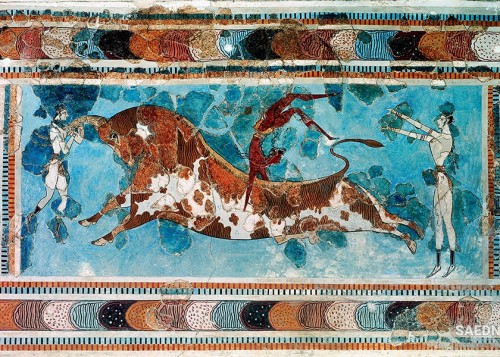The frontiers of the "Guarded Domains of Iran" (Mamalik-i Mahrusa-yi Iran ), as the country had been defined since Safavid times, were almost the same as those in the fifth-century definition of Iranshahr in the Sassanian manual, Nama-yi Tansar , and those outlined by fourteenth-century geographer Hamdullah Mustawfi, the author of Nazhat al-Qulub .
In Qajar times Iran's boarders with the Ottoman Empire stretched across the western Caucasus and eastern Anatolia along the Zagrus Range to the northwestern tip of the Persian Gulf. In spite of serious challenges from both sides, which led to several episodes of occupation of Iran's western provinces by the Ottomans, these common frontiers proved to be essentially unalterable. Nadir's largely unsuccessful campaigns against the Ottomans in Iraq in the 1730s and Karim Khan's abortive attempt to conquer Basra in 1775–1779 exhibited Iran's handicap in securing permanent territorial gains beyond the Zagrus Range.
The early Qajar shahs and their contemporary Ottoman sultans entertained expansionist ambitions along these turbulent frontiers, yet despite disputes over Kurdish and Arab tribes of Kurdistan and Khuzistan and over the Persian pilgrims to the Shi'ite holy cities of Iraq there was no significant shift in boundary lines, which were set as early as the Treaty of Amasiya in 1555.
In spite of instability along the Perso-Ottoman borders, during the nineteenth century there was growth in commercial and human exchanges between the two countries. Most significant, there was an increase in the volume of the Persian pilgrimage traffic to the shrine cities of Najaf and Karbala in Ottoman Iraq. Veneration for the Shi'ite imams, whose shrines were adorned by the rulers of Iran, made the Persian public more aware of its Shi'ite identity. Pilgrims to these holy cities also paid homage to the 'ulama, who since the late eighteenth century had been residing there in greater numbers.
They presided over teaching circles, which attracted large numbers of students from Iran. Through these students, who returned to Iran to occupy religious positions in their local communities, senior jurists (mujtahids ) in Iraq were able to exercise wider authority over the religious affairs of Iran. Their followers throughout the Shi'ite world also grew larger once the means of communication with them improved. At times the decisions of these religious dignitaries clashed with the policies of the Persian state, but by and large they relied on the Qajar rulers to be their protectors and benefactors.
Throughout the Qajar era the Ottoman Empire also served as a window to Europe and an important conduit for the adoption of Western-style administrative and other measures. Nearly all reform-minded statesmen of the Qajar period were exposed at some stage in their careers to modernization efforts in the neighboring empire. These men looked upon the reforms of Mahmud II and the Tanzimat era as models for state-sponsored reforms in their own country. The Qajar shahs, however, viewed these attempts in their neighboring empire with ambivalence.
They often saw such measures as hazardous departures from the old ways, changes that could jeopardize the security of their realm and the survival of their throne. The loss of Ottoman provinces to nationalist movements in the Balkans and growing European intervention in the internal affairs of the Ottoman Empire dampened whatever enthusiasm they entertained for change. The two worlds of the Persians and Ottomans thus remained essentially divided along a religiolinguistic chasm that could only be crossed by an intellectual minority.
Iran's eastern frontiers were move volatile and culturally barren. From the Central Asian khanates of Khiva, Marv, and Bukhara in the northeast to Herat and Kandahar in the east to Baluchistan and Makran in the southeast, the Persian frontiers witnessed persistent nomadic incursions. Turkoman, Afghan, and occasionally Baluch encroachments into the interiors of Khurasan and neighboring provinces ravaged the countryside and interrupted the flow of eastern trade with India and Central Asia. The Sunni Turkoman raiders' common practice of abducting villagers and townsmen of Khurasan to sell in the slave markets of Khiva and Bukhara in Central Asia was a major menace to the Qajar government and damaged its reputation. Retaliatory campaigns to quell the Turkoman threat and to reassert sovereignty over eastern principalities, most notably Herat and Marv, were of limited effect and a constant drain on the state's limited resources.
Down to the closing decades of the nineteenth century, when Russia completed the annexation of the khanates of Central Asia and a partially integrated Afghanistan emerged under British custody, the threat to the Persian eastern frontiers remained unabated. The Turkoman and Afghan raids weakened Iran's old ties with Transoxania and in effect contributed to Khurasan's cultural and commercial decline. The fervent upholding of Sunni Islam in Central Asia did not ease off after the demise of the Uzbek kingdom of the sixteenth and seventeenth centuries. Shi'ite Iran thus continued to be enveloped on its eastern front by an unsympathetic, if not hostile, Sunni creed in much the same way as it was surrounded on its western front by the Sunni Ottomans. As a legacy of the Safavid era, Iran's ethnoreligious solitude only reaffirmed its national integration. The notion of Guarded Domains thus represented a sense of territorial and political homogeneity in a country in which the Persian language, culture, kingship, and culture and the Shi'ite religious creed became inseparable parts of the evolving national identity.
The fact that Iran's neighbors on its northern and southern frontiers were two rival powers, Russia and Britain, also reflected its geopolitical containment. Highly influential in the political, economic, and sociocultural making of modern Iran, these powers came into wider contact with Iran when it was about to recover from the political malaise and isolation of earlier decades. Since the eighteenth century Russia's ambitions in the Caucasus and on the Caspian coast had been a matter of occasional concern for the Safavids and their successor states; but in the first quarter of the nineteenth century the Qajar state was compelled to give the greatest priority to the threat coming from the northern neighbor. Loss of territory and prestige during two rounds of Russo-Persian wars (1805– 1813 and 1826–1828), combined with the ensuing bankruptcy, culminated in the Turkmanchay Treaty of 1828.
This treaty permanently severed the Caucasian provinces from Iran and settled the Russo-Persian northwestern boundary along the Aras River. It also imposed on Iran enduring capitulatory and other types of restrictions alien to the Persian notion of sovereignty. The psychological impact of defeat was only magnified by Russia's conquests on the northeastern periphery in the following decades and its postures of advancing toward the northern provinces of Iran proper.
In Iran's nineteenth-century political history there have been few events as pivotal as war with Russia. The Qajar government and society were quick to recognize the Russian threat but came to terms with it with difficulty. The Griboidov incident in 1829, in the aftermath of the war, when a Russian diplomatic mission was massacred by the Tehran mob, was one symptom of public disenchantment with the humiliating submission to a Christian power. In the following decades with varying intensity Russia held the implicit threat of military occupation as a Damoclean sword over the Qajar state in order to accomplish diplomatic and other objectives. Russian advances in the khanates of Central Asia from the early 1860s to late 1880s were seen in Tehran as a mixed blessing. The Qajars were alarmed at the possibility of losing Khurasan and the Caspian provinces to Russia while at the same time being relieved of the Turkoman menace on their frontiers.


 The Safavid Administrative System
The Safavid Administrative System














































